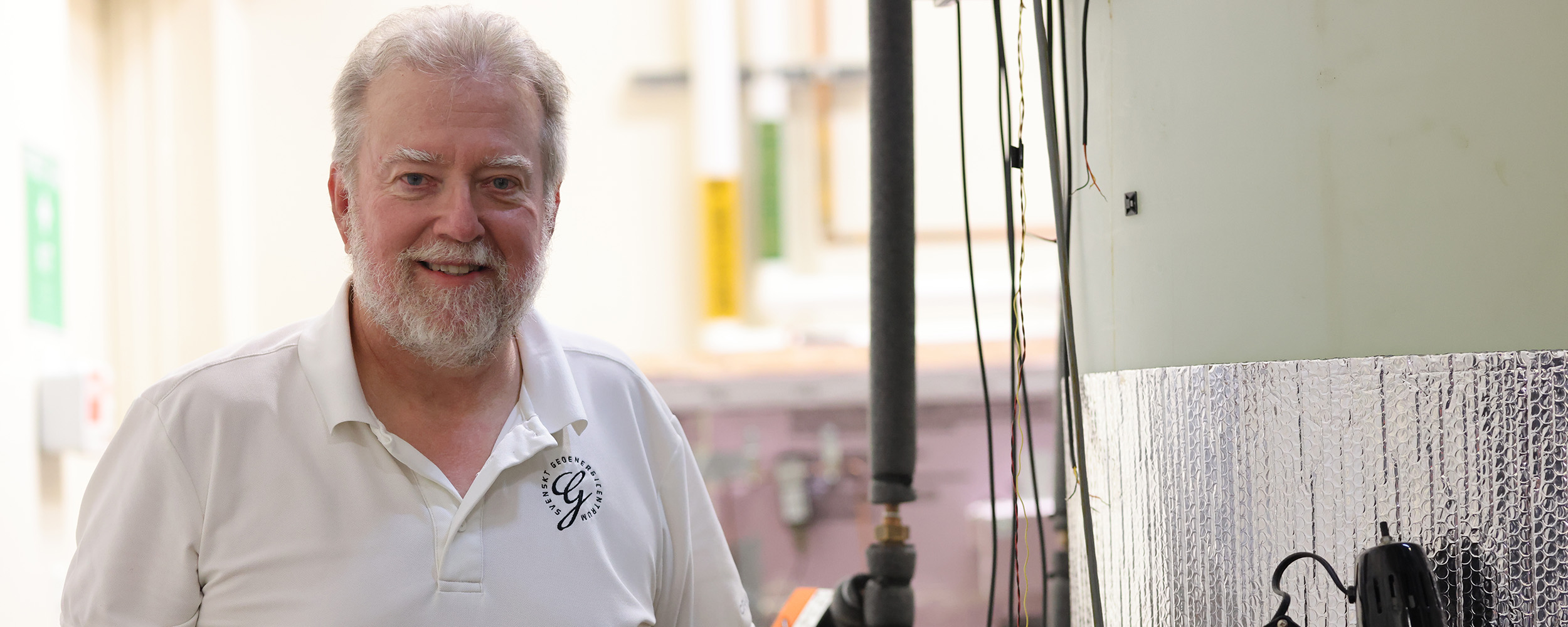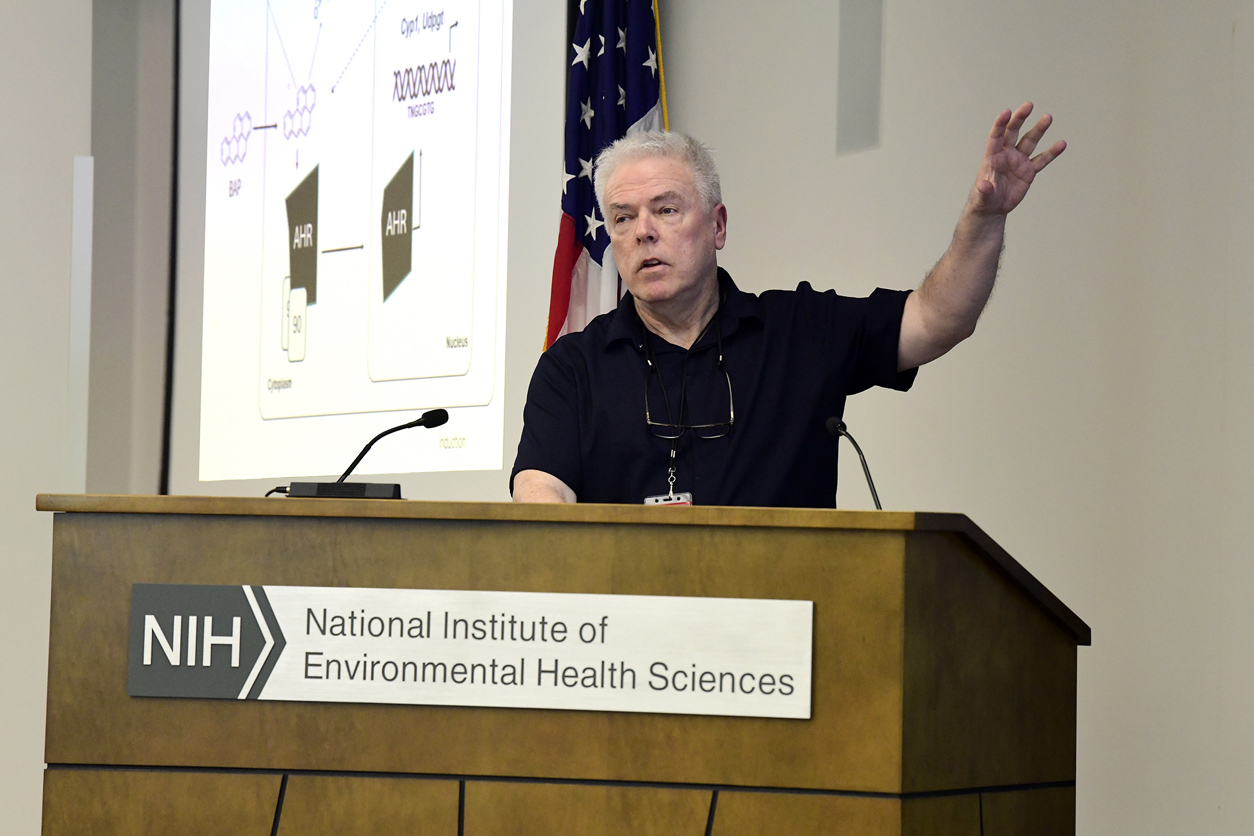Pioneering Energy Solutions: The work of Dr. Jeffrey D. Spitler at Oklahoma State University – Oklahoma State University

Report on Dr. Jeffrey D. Spitler’s Contributions to Sustainable Development Goals
Executive Summary
This report details the career and research contributions of Dr. Jeffrey D. Spitler, a Regents Professor at Oklahoma State University, with a specific focus on their alignment with the United Nations Sustainable Development Goals (SDGs). Dr. Spitler’s work in building energy efficiency and geothermal technology provides significant advancements toward achieving several key SDGs, most notably SDG 7 (Affordable and Clean Energy), SDG 9 (Industry, Innovation, and Infrastructure), SDG 11 (Sustainable Cities and Communities), and SDG 13 (Climate Action). His commitment to education and international collaboration further supports SDG 4 (Quality Education) and SDG 17 (Partnerships for the Goals).
Advancements in Affordable and Clean Energy (SDG 7)
Dr. Spitler’s research is fundamentally centered on improving energy efficiency and promoting renewable energy sources, directly contributing to the targets of SDG 7. His work provides tangible solutions for increasing the global percentage of renewable energy and doubling the rate of improvement in energy efficiency.
Core Research Areas Supporting SDG 7
- Ground-Source Heat Pump (GSHP) Systems: Development of innovative design and optimization methods for ground heat exchangers, which utilize the earth’s stable temperature to provide clean heating and cooling, reducing reliance on fossil fuels.
- Thermal Systems Analysis: Creation of advanced simulation tools that enable precise evaluation of building energy consumption, allowing for the design of more efficient systems.
- Performance Monitoring: Establishment of improved methodologies for measuring and verifying the long-term performance of building energy systems, ensuring sustained efficiency and contribution to clean energy targets.
Fostering Innovation and Sustainable Infrastructure (SDG 9 & SDG 11)
Through the development of pioneering software and novel engineering techniques, Dr. Spitler’s work enhances industrial innovation and promotes the development of sustainable and resilient infrastructure, which are central to SDG 9 and SDG 11.
Key Innovations and Infrastructure Contributions
- GLHEPRO Software: Dr. Spitler developed GLHEPRO, a design tool for ground heat exchangers. This software has become an industry standard, promoting the widespread, cost-effective adoption of geothermal technology and upgrading infrastructure with clean technology in line with SDG 9.
- Angled Borehole Research: His recent research focuses on optimizing fields of angled and vertical boreholes. This innovation addresses spatial constraints in urban environments, making geothermal systems more feasible for sustainable cities (SDG 11) and reducing the environmental footprint of drilling operations.
- Large-Scale Geothermal Projects: Through participation in a U.S. Department of Energy initiative, Dr. Spitler’s team is improving design software for large-scale geothermal deployment at federal sites, demonstrating a scalable model for sustainable infrastructure.
Impact on Climate Action, Education, and Global Partnerships (SDG 13, 4, & 17)
Dr. Spitler’s career demonstrates a holistic approach to sustainability, integrating technological advancement with education and international cooperation to address global challenges.
Contributions to Climate, Education, and Partnerships
- Climate Action (SDG 13): By advancing geothermal and energy-efficient building technologies, his work directly contributes to mitigating climate change by reducing greenhouse gas emissions from the building sector.
- Quality Education (SDG 4): As a professor and mentor at Oklahoma State University, Dr. Spitler has educated and trained a new generation of engineers equipped with the skills to design and implement sustainable energy solutions.
- Partnerships for the Goals (SDG 17): His influence is global, exemplified by his role as a Fulbright Distinguished Chair in Sweden, keynote addresses at international conferences, and collaborations with institutions worldwide. These partnerships foster the global exchange of knowledge necessary to achieve the SDGs. His work with federal agencies and industry partners further strengthens these multi-stakeholder collaborations.
Conclusion
Dr. Jeffrey D. Spitler’s contributions to engineering and academia represent a significant and sustained effort toward achieving global sustainability. His research provides practical, innovative, and scalable solutions that directly support the framework of the Sustainable Development Goals. His work in clean energy (SDG 7), sustainable infrastructure (SDG 9 & 11), and climate action (SDG 13), complemented by his dedication to education (SDG 4) and global partnerships (SDG 17), establishes a powerful model for how academic research can drive progress on the world’s most pressing environmental and social challenges.
SDGs Addressed in the Article
1. Which SDGs are addressed or connected to the issues highlighted in the article?
- SDG 7: Affordable and Clean Energy
The article’s primary focus is on Dr. Spitler’s work in advancing energy efficiency and geothermal technology. This directly supports the goal of ensuring access to affordable, reliable, sustainable, and modern energy. His research on ground-source heat pumps is a clear effort to promote a clean energy source.
- SDG 9: Industry, Innovation, and Infrastructure
Dr. Spitler’s development of innovative software like GLHEPRO, algorithms for angled boreholes, and improved methods for building load calculations represent significant contributions to technological innovation. This work helps build resilient and sustainable infrastructure by making buildings more energy-efficient.
- SDG 11: Sustainable Cities and Communities
The research on energy-efficient building systems is crucial for creating sustainable cities. By improving how buildings are heated and cooled, Dr. Spitler’s work helps reduce the overall environmental footprint of urban areas. The article explicitly mentions his forward-looking research addresses “scaling systems to serve entire districts.”
- SDG 13: Climate Action
The promotion of geothermal energy and enhanced building energy efficiency are fundamental strategies for climate change mitigation. By reducing reliance on fossil fuels for heating and cooling, this research contributes directly to lowering greenhouse gas emissions, which is a core component of climate action.
- SDG 4: Quality Education
The article highlights Dr. Spitler’s role in education, stating he has “mentored graduate and undergraduate students” and “shaped the next generation of engineers.” This commitment to teaching and mentoring in the field of sustainable technology supports the goal of providing quality education and promoting skills for sustainable development.
2. What specific targets under those SDGs can be identified based on the article’s content?
- Under SDG 7 (Affordable and Clean Energy):
- Target 7.2: “By 2030, increase substantially the share of renewable energy in the global energy mix.” Dr. Spitler’s work on ground-source heat pump systems and geothermal technology directly aims to increase the adoption and effectiveness of a key renewable energy source for heating and cooling.
- Target 7.3: “By 2030, double the global rate of improvement in energy efficiency.” His research is centered on “building energy efficiency,” including “advancing simulations and tools that allow engineers to evaluate building energy use with greater precision” and creating “better ways to measure and evaluate long-term performance in buildings.”
- Target 7.a: “By 2030, enhance international cooperation to facilitate access to clean energy research and technology…” The article notes his role as a “Fulbright Distinguished Chair… in Sweden,” his delivery of “keynote addresses at global conferences,” and his leadership in “international collaborations,” all of which facilitate the global sharing of clean energy technology.
- Under SDG 9 (Industry, Innovation, and Infrastructure):
- Target 9.4: “By 2030, upgrade infrastructure and retrofit industries to make them sustainable, with increased resource-use efficiency and greater adoption of clean and environmentally sound technologies…” The application of geothermal systems in buildings, including the U.S. Department of Energy initiative to “expand geothermal heating and cooling at federal sites,” is a direct example of upgrading infrastructure with clean technology.
- Target 9.5: “Enhance scientific research, upgrade the technological capabilities of industrial sectors… and encourage innovation.” Dr. Spitler’s entire career, particularly the development of the “GLHEPRO, a software tool,” and new “algorithms to automate and optimize angled borehole design,” exemplifies the enhancement of scientific research and technological innovation.
- Under SDG 11 (Sustainable Cities and Communities):
- Target 11.6: “By 2030, reduce the adverse per capita environmental impact of cities…” By making building systems more energy-efficient, his work helps reduce the energy consumption and associated emissions of urban areas. The mention of “scaling systems to serve entire districts” points directly to improving the sustainability of community-wide infrastructure.
- Under SDG 13 (Climate Action):
- Target 13.3: “Improve education, awareness-raising and human and institutional capacity on climate change mitigation…” Dr. Spitler’s role in mentoring students and leading the “Building and Environmental Thermal Systems Research Group” builds human capacity by training future engineers with the skills needed to implement climate mitigation technologies.
- Under SDG 4 (Quality Education):
- Target 4.7: “By 2030, ensure that all learners acquire the knowledge and skills needed to promote sustainable development…” By mentoring students in “sustainable energy research” and instilling a “spirit of curiosity and problem-solving,” Dr. Spitler directly contributes to equipping learners with the necessary skills for sustainable development.
3. Are there any indicators mentioned or implied in the article that can be used to measure progress towards the identified targets?
- Implied Indicator for Target 7.2: The increased deployment and effective implementation of geothermal systems. The article implies this through the mention of the GLHEPRO software, which “has helped countless engineers implement geothermal systems more effectively and at lower costs,” and research that is “expected to transform how ground-source heat pump systems are deployed nationwide.”
- Implied Indicator for Target 7.3: Improvements in the precision of building energy use analysis. The article states his work involves “advancing simulations and tools that allow engineers to evaluate building energy use with greater precision” and “improving methods for heating and cooling load analysis.”
- Implied Indicator for Target 9.5: The development and adoption of new software and engineering tools. The creation of “GLHEPRO” and the development of “algorithms to automate and optimize angled borehole design” are concrete outputs that serve as indicators of innovation.
- Implied Indicator for Targets 13.3 and 4.7: The number of students and professionals trained in sustainable building technologies. The article points to this by mentioning his mentorship of “graduate and undergraduate students” and his role in shaping “the next generation of engineers.”
Summary Table of SDGs, Targets, and Indicators
4. Create a table with three columns titled ‘SDGs, Targets and Indicators’ to present the findings from analyzing the article.
| SDGs | Targets | Indicators (Mentioned or Implied in the Article) |
|---|---|---|
| SDG 7: Affordable and Clean Energy |
|
|
| SDG 9: Industry, Innovation, and Infrastructure |
|
|
| SDG 11: Sustainable Cities and Communities |
|
|
| SDG 13: Climate Action |
|
|
| SDG 4: Quality Education |
|
|
Source: news.okstate.edu
What is Your Reaction?
 Like
0
Like
0
 Dislike
0
Dislike
0
 Love
0
Love
0
 Funny
0
Funny
0
 Angry
0
Angry
0
 Sad
0
Sad
0
 Wow
0
Wow
0




















































.jpg.webp?itok=0ZsAnae9#)

























